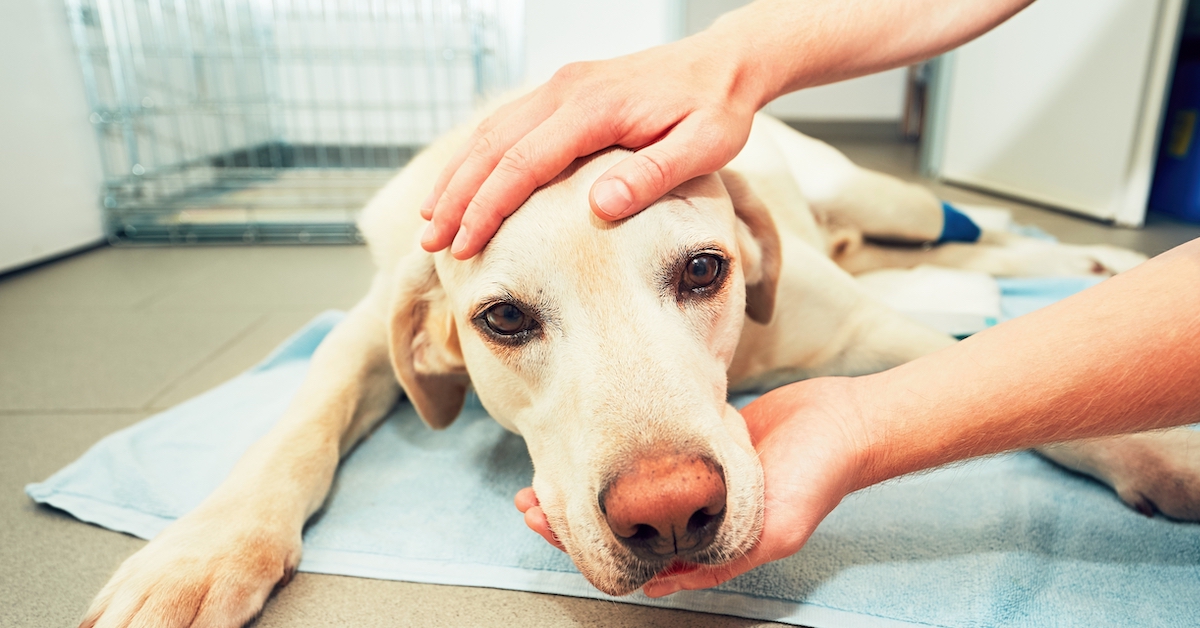End of Life Care for Your Senior Pet
Make your senior pet’s quality of life as good as it can be in his final days.

Owning a pet is an amazing experience. Over the years, we grow to love our pets and consider them a part of the family. When they reach their senior years, the reality that you will soon lose your cat or dog can be difficult to comprehend. Although end of life is never a pleasant topic to think about, it’s important to be prepared for when the time comes, especially if your pet has already started showing signs of poor quality of life.
While you may never be fully ready to say goodbye to your pet, you’ll want to take the necessary steps to make his remaining days as comfortable and dignified as possible. Here’s a look at some end-of-life care tips and information for your senior pet.
Red Flags that Indicate a Poor Quality of Life
Every pet has specific needs that need to be recognized. Quality of life is one way that pet owners can define the overall mental and physical well-being of their cat or dog. There are certain signs that may indicate that your senior pet is experiencing a reduced quality of life, including the following:
- Your pet no longer wants to play
- Your pet hides
- Your pet does not interact with others like he used to
- Your pet is not eating and/or drinking well
- Your pet has more bad days than good
- Your pet appears to be in pain
- Your pet doesn’t like the activities that he used to
- Your pet is no longer active and spends a lot of time sleeping
While many of these signs develop naturally due to the aging process, certain conditions can also cause your pet’s life to deteriorate. Some examples of chronic health conditions that commonly develop in senior dogs include cancer, blindness, deafness, chronic renal disease, osteoarthritis, and overweight/obesity.
Signs that Your Pet May Be Near End of Life
While we all want our pets to live forever, there comes a time when your pet may be nearing the end of his life. It’s important to know the signs that your pet may be dying so that you can make him as comfortable as possible or make the decision to put him down with euthanasia. Some common signs that a pet may be near the end of life include:
- Extreme weight loss
- Fatigue
- Poor coordination
- Incontinence
- Confusion
- Decreased mobility
- Behavioral changes
- Poor response to treatments
- Dehydration/refusing to eat/drink
- Abnormal odor
- Dull eyes
- Poor temperature regulation
- Lack of interest
- Abnormal breathing
- Seizures
In some cases, certain signs may indicate that your pet has developed a health condition that can be treated. Always consult your vet if your pet is showing abnormal signs or symptoms to determine if treatment is possible.
End of Life Care Tips for Your Senior Pet
1. Get a Check Up
If your pet hasn’t been to the vet in a while, now is a good time to schedule a checkup. While younger pets generally only need an annual vet visit, senior pets tend to encounter more frequent health problems. Some health problems can also be subtle and you may not recognize a problem until it has progressed to a more serious stage.
2. Ask About Medications
Discuss any health problems your pet may be experiencing with your vet and ask about potential medications. Your vet may be able to prescribe a medication to help with pain relief, stimulate your pet’s appetite, or provide other health benefits.
3. Stick to Routines
Pets enjoy routines so try not to change your schedule if possible. While you may need to alter your schedule, (for example, shorter walks), you should avoid changing it too much as this can be confusing for older pets.
4. Stimulate Your Pet’s Mind
While your pet’s body may be slowing down, his mind may still be sharp. Help stimulate your pet’s mind through enjoyable activities. Provide your pet with food puzzles, a new toy, or something to sniff. Some pets enjoy calming music while others prefer tactile stimulation.
5. Consider Supplements
There are many supplements on the market designed to enhance the health of pets. Consider supplements designed to slow down cognitive decline, clear free radicals, and support brain health. Some supplements to consider include omega-3 fatty acids, probiotics, and joint supplements.
6. Know Your Options at the End
When it finally comes to your pet’s end of life, it’s important to know your options. Although some pets do pass away peacefully in their sleep, this doesn’t happen with all pets. You may need to help ease your pet’s suffering by putting him to sleep. Euthanasia occurs when a veterinarian gives your pet an overdose of a sedative that puts your pet to sleep and stops his heart. The process typically takes just 10 to 20 seconds.
Caring for Senior Dogs’ End-of-Care Needs
Our pets rely on us for almost everything, including their end-of-life care. Although it can be difficult to make these hard choices on behalf of your pet, know that your decisions are what’s best. If you are concerned about your pet’s physical or mental health or need guidance on how to best care for your senior pet, reach out to your vet for assistance.
Ready to start saving money on pet wellness care?
Then take a look at Mint Wellness, the pet wellness plan that provides fast reimbursement on routine pet care. Save on vaccinations, wellness exams, preventatives, dental, and more!
Learn More


